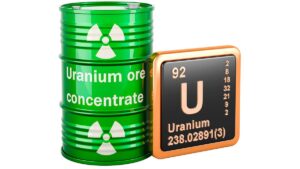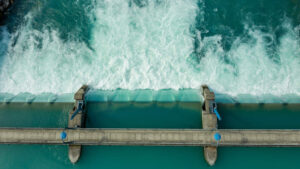Iron ore is on a tear but are there rips under the surface?

Talk about catching the wave at just right time Pic: Getty
Australian iron ore producers may have reason to cheer with a research note suggesting that the metal’s continued resilience in the face of the COVID-19 pandemic is expected to not just continue but positively thrive thanks to demand outstripping supply.
Morgans believes that the current iron ore price, which currently sits above $US90 ($137) per tonne, is conservative and that it could re-test $US120/t.
Iron ore futures have already hit the $US100/t mark, highlighting that the estimate is well within reach.
This is due to ongoing supply issues from Brazil where the world’s second largest seaborne producer Vale has slashed its 2020 guidance by between 35 million and 40 million tonnes (Mt) to between 310Mt and 330Mt.
There is potential for this production to fall further due to Brazilian government restrictions and the spread of COVID-19 into the country’s mining districts, which might further affect Vale’s ability to ship iron ore.
UBS global head of mining Glyn Lawcock told the Australian Financial Review that while Brazil shipped 6.5Mt of iron ore a week in 2019, there was only one week this year when it managed to ship more than 6Mt.
“The last three weeks they’ve shipped less than 4.5 million tonnes a week,” he said.
Lawcock added that while the weather could be blamed for the poor production during the first quarter, Brazil now had the fourth highest number of COVID-19 cases globally and that absenteeism in the workplace was likely to be what was hurting production now.
Further support for a higher iron ore price comes from the steadily declining stockpiles in China and expectations that China will unveil stimulus programs and spend large sums on infrastructure in a bid to revive its economy.
New inspection rule
That is not to say that Australian iron ore is going to enjoy free reign in China.
Customs authorities in the world’s largest iron ore consumer have introduced a new inspection procedure that analysts say could be used to block Australia’s iron ore imports.
The new rules, which will take effect from June 1, allow customs officials to inspect iron ore at the request of the trader or the importer.
Coming at a time when relations between Australia and China have reached a new low over the COVID-19 inquiry, it is little wonder that some analysts believe the policy is aimed squarely at hurting Australia as the inspections could be aimed at its iron ore imports while those of other countries are allowed through without issue.
Other observers believe that the precarious supply from Brazil means that any threat is hollow as China would have little choice but to import Australian iron ore to meet its requirements.
RM Corporate Finance director Guy Le Page believes it is unlikely China will cut back or blacklist Australia’s iron ore.
“In the short to medium-term it’s unlikely because the lead time to get these iron ore projects into production is quite significant,” he told Stockhead.
“I think the significant supply disruptions out of Brazil have put such a hole in the market that [China] can’t afford to switch off 100 or 200 million tonnes of iron ore out of Australia because that would create a significant deficit.”
READ: Guy on Rocks: Why China’s retaliation shouldn’t impact Australia’s iron ore market
Other concerns
RBC Capital Markets also warned that while Chinese monetary support has had a quicker impact on iron ore demand than anticipated, it still expected the weaker property and export sectors to weigh down on consumption.
It added that rising domestic supply in China and seaborne supply could move the market back into a surplus in the second half of the year, which RBC says led to its forecast that prices would average $US67/t.
However, RBC noted that this could be offset by a faster recovery in steel demand, rising inflation expectations and more supply impacts from the COVID-19 pandemic.
ASX small cap iron ore companies
It is still early days, but even with the implied threat of China’s iron ore inspections, the supply crunch from non-Australian sources presents opportunities for junior companies.
Magnetite Mines (ASX:MGT) recently raised $1.28m through a rights issue, highlighting investor interest in its 4-billion-tonne Razorback iron ore mine in South Australia.
It has also landed a non-binding indicative farm-in proposal that could see RFC Ambrian Group-founded Braemar Mining Developments (BMD) acquire a stake in the project.
While magnetite projects receive a lot of flak compared to haematite deposits, the softness of the Razorback ore makes it much easier to process compared to other magnetite mines – particularly those in Western Australia that tend to be harder rock.
Lab testing has yielded products with grades of nearly 70 per cent.
Meanwhile, Fenix Resources (ASX:FEX) is advancing its Iron Ridge project in the Pilbara towards production with permit approvals now in the final stages.
The company plans to produce a direct shipping ore product with grades approaching 65 per cent iron from the project, which has a resource of 9.2 million tonnes grading 64.1 per cent.
Strike Resources (ASX:SRK) is also pushing its Paulsens East project in the Pilbara towards potential early cash flow, while Legacy Iron Ore (ASX:LCY) has embarked on a resource upgrade drilling program for its Mt Celia project.
Small iron ore producers such as Mt Gibson Iron (ASX:MGX) and Champion Iron (ASX:CIA) would also benefit from the high prices.
At Stockhead, we tell it like it is. While Magnetite Mines is a Stockhead advertiser, it did not sponsor this article.
Related Topics
UNLOCK INSIGHTS
Discover the untold stories of emerging ASX stocks.
Daily news and expert analysis, it's free to subscribe.
By proceeding, you confirm you understand that we handle personal information in accordance with our Privacy Policy.








